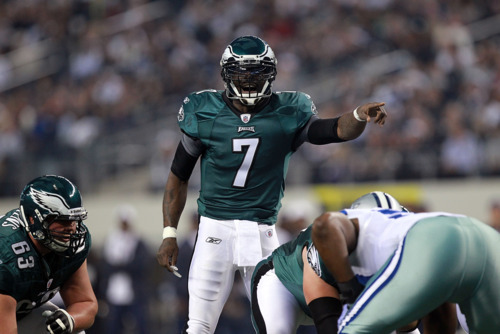While I missed the Eagles-Steelers game live, I certainly caught the harsh real-time reaction to the loss. However, once I caught up on the game myself yesterday, I was surprised how little cause for alarm I saw. Sure, the Eagles lost. But not all losses are created equal.
The Eagles lost by 2 points, on the road at a good Pittsburgh team. That, on its face, should be enough to keep the sky from falling. The Arizona loss and even the Cleveland win were both more alarming.
For starters, the defense continues to play well overall. They went into the game 2nd in defensive DVOA, and allowed only 16 points to a Pittsburgh team that averaged nearly 26 per game through the first three weeks, was coming off its bye, and returned its top running back. I don't see much to complain about with that performance.
Granted, there are shortcomings on defense that need to be shored up. The defensive line got pressure on Ben Roethlisberger, but failed to record a sack. The run defense was lacking at times, especially when Fletcher Cox was on the sidelines. And Nnamdi Asomugha continues to show that he's not a bad corner, but certainly a limited one. But these are complaints at the fringes of success.
The bigger question marks were on offense, but even there I see more silver linings than storm clouds. For the second straight week, Andy Reid toned down the offense, keeping the run-pass ratio under control while providing easier routes for Michael Vick. Vick responded with his second straight solid week through the air: completing two-thirds of his passes, two touchdowns and zero interceptions. And the offense left multiple plays on the field. Obviously there was the fumble down at the goal line, which is just killer bad luck. The Eagles also should have received a defensive pass interference call on Ike Taylor against DeSean Jackson in the second quarter. That would have put them in position for another score.
The biggest problem, which we already knew going in, was the offensive line. They don't have the individual players to match up well, but they could *ahem* muddle through if only their communication was better. The Steelers' zone-blitz scheme isn't easy to protect against, but you can't have rushers coming free at the quarterback if you want to win in the NFL.
One final point, regarding Michael Vick's fumbling. There's a lot of hand-wringing over it, even people saying he should be benched. I don't believe that. Vick has always been rather fumble-prone, with a rate often hovering around or just below 10% of all sacks and runs. He led the NFL in fumbles twice, in 2004 and 2010. But through all that, he's never had a fumble rate as bad as he is putting up this year.
A few weeks back, I suggested that Vick's interception rate was ridiculously high, bordering on a statistical anomaly. Since then, after two interception-less games, it has dropped to just a tick under last year's number. At this point, I'm looking at Vick's absurd 17.4% fumble rate and thinking the same thing. He's probably never going to be great at controlling the ball, but this poor trend isn't likely to sustain itself either.
Photo from Getty.







